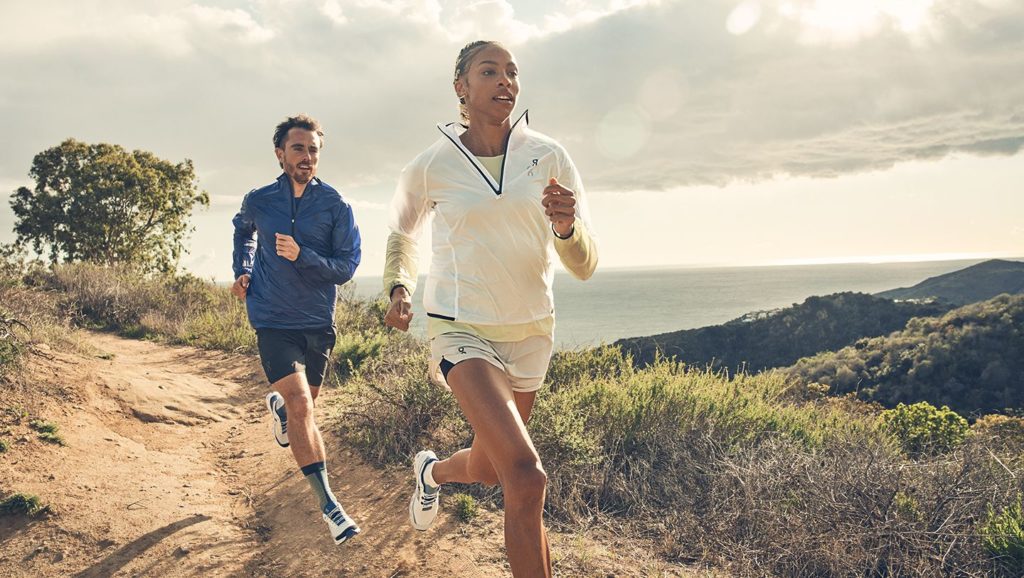
All runners, even professional ones, have their comfort zones. Marathoners may balk at focusing on faster leg turnover in a 5K; 800m runners might swear they’ll never tackle a half marathon. And road and track runners sometimes raise more than a few eyebrows at the prospect of hitting the trails.
“I’m not going to lie. At first, I wasn’t into the idea because of how foreign running trails was to me,” says Chloe Abbott, a 400-metre runner and On athlete. “It freaked me out to think about running on rocks and in nature.”
After starting out with the 100- and 200-metre in high school, Abbott’s coach pointed her toward the 400-metre distance, where she has excelled through college and as a professional On athlete. Her long runs are 20 minutes — no kidding — and she prefers flat surfaces, mainly gravel or track.
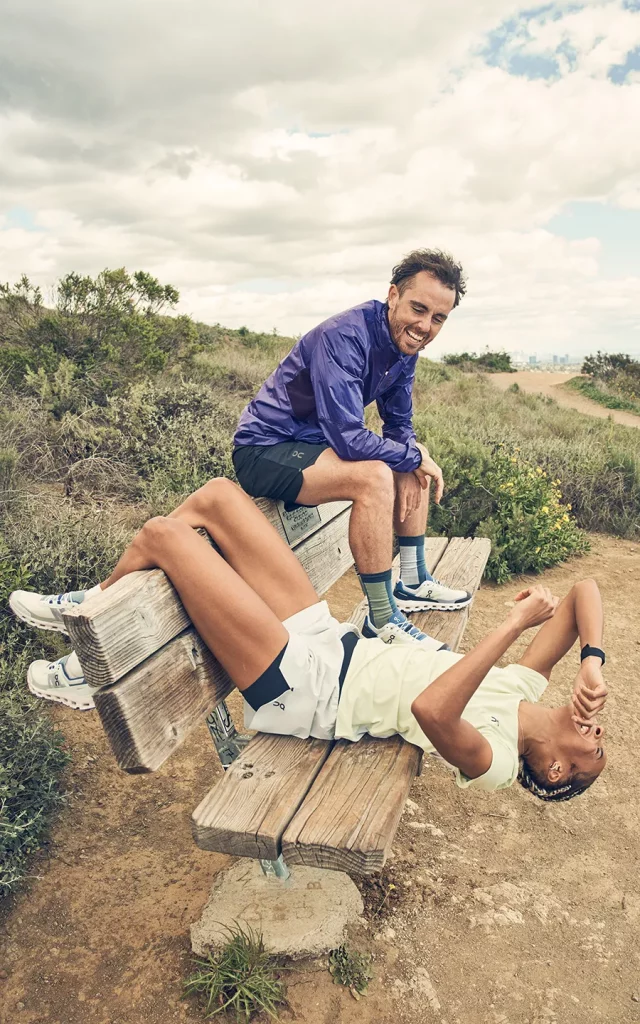
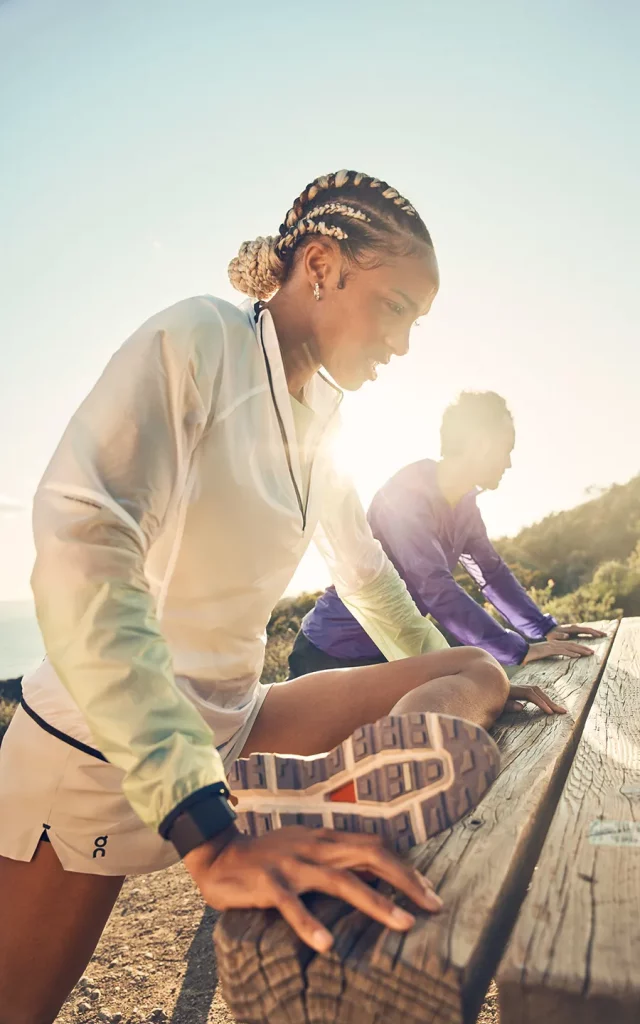
Used to flat ground and short distances, Abbott was nervous before her first trail run. “It freaked me out to think about running on rocks and in nature,” she says
Abbott felt secure in the Cloudvista, which makes sense — the shoe’s traction helps beginners feel instantly comfortable (though any runner will appreciate the extra grip).
But if you never step outside your comfort zone, you’ll likely miss out on growth and experience. Trail running can be intimidating, especially for the city dweller who prefers navigating streets or hopping on treadmills. But with the right know-how and proper gear, trails may just win you over.
On the other side of the running spectrum, fellow On athlete David Kilgore is an avid trail runner — though he has to get creative in the city that never sleeps. He frequents the trails in Central Park (yes, they exist) and often heads over the George Washington Bridge to the Palisades trails in New Jersey. He also doesn’t turn down opportunities to travel; his favourite trail experience was also one of his first long runs (35-kilometres roundtrip): the Kalalau Trail in Kauai.
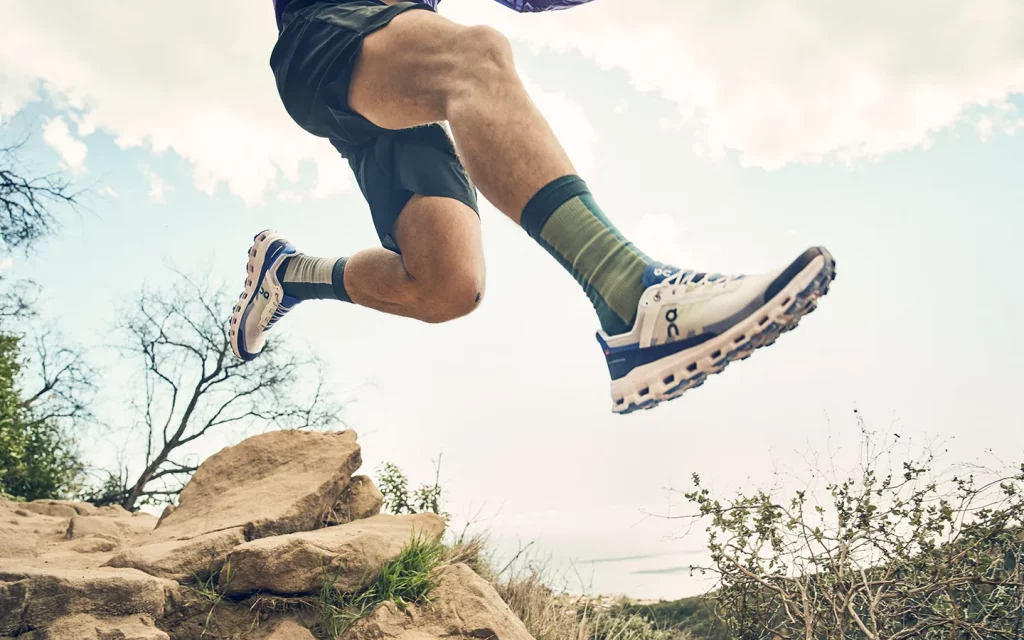
The Cloudvista is lightweight — something trail shoes are often not — with a mid-level cushion that provides just the right amount of comfort, Kilgore says.
To get his trail fix, Florida-born, NYC-based Kilgore has to get creative. The ultrarunner regularly tackles the hills in Central Park.
“I’ve always been an outdoorsy kind of guy, and I’d been running trails since I was a kid in Florida,” he says. “But I didn’t realize there was a whole other world of racing trails.” He jumped into the ultramarathon distances also not realising that there were shorter trail races. “By that point I was too far gone and stuck in the ultramarathon distance,” Kilgore says, laughing.
The two runners met up in February to scale Los Leones Trail in Palisades, California (both wearing the new On Cloudvista, which is specifically designed for trails). For Kilgore, it was an opportunity to try new trails. “If you do the same thing a million times, you start to take things for granted,” says Kilgore. For fresh-off-the-track Abbott, it was a totally new experience: “I loved seeing the views, the clouds, real plants and trees, the tangible smells.”
“It was the most quiet outside I’ve ever experienced,”Abbott says. “It was so peaceful. And the views were insane.” And the reward at the top of the trail? “Breathtaking,” Abbott says. “You can really appreciate the running you did.” Below, Kilgore and Abbott share tips for runners who are looking to dip a toe into the trail-running scene.
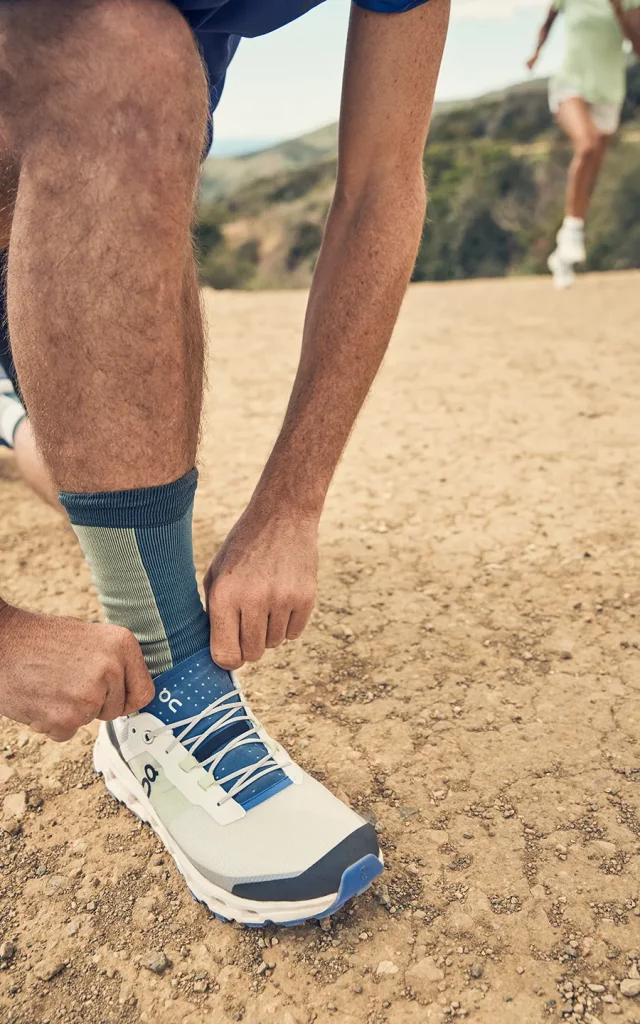
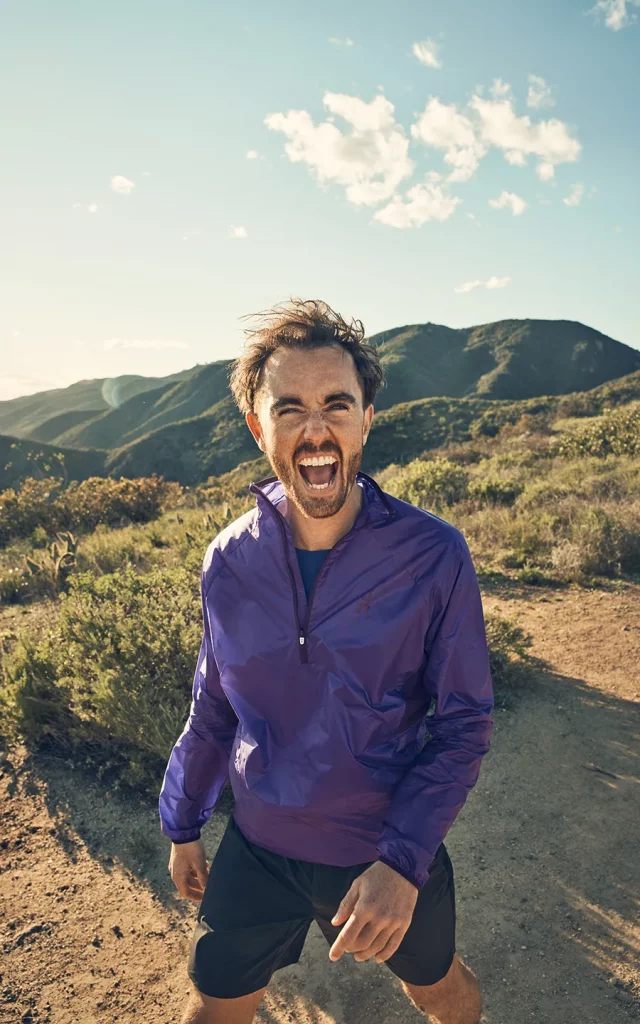
Respect the Terrain and Wilderness
Just as you should never turn your back to the ocean, it’s key to respect the rugged terrain you’ll find once you head off road. Kilgore and Abbott emphasize the importance of bringing a friend or joining a group if you’ve never run trains or a certain trail before.
Kilgore recommends mapping out a route and sharing it with a family member or friend. “You may not have service where you’re going,” he says, making it extra important for someone to know your planned route and timing.
Elevation changes and uneven terrain can make a few kilometres feel totally different. When starting out with trail running, measure your runs by time, not mileage.
Both Kilgore and Abbott attest to the importance of pairing up with a running buddy when tackling trails, no matter whether you’re a newbie or a pro.
Fuel Up (and Bring Extra)
If you’re a marathoner thinking of trying the trails, you already know a thing or two about mid-run fueling. But on the trails, “just” a 10K run might require a refuel, whereas a road run likely wouldn’t. That’s because trails tend to be slower due to the terrain and elevation. And yes, you could take a wrong turn.
“Make sure you pack a full bottle of water and snacks you might need,” Kilgore says. “If you think this trail will take you an hour, plan for two hours. Double up and pack extra for the first few times.”
Kilgore and Abbott both recommend foods that are easy to carry in a pack or in pockets: energy bars (they like Clif and Nature Valley), bananas, gels. For runs that take several or more hours, Kilgore recommends cooked whole potatoes, salt tabs to replenish electrolytes, and in some cases, fast food (valuable for its quick-release energy and high sodium content).
For hydration, Kilgore relies on his UltrAspire Handheld Water Bottle, which can be worn on either hand and has an ergonomic design that requires minimal effort to take a drink.
Choose Multitasking Gear
Kilgore uses a waist pack, like the ones from UltrAspire to pack his snacks and other essentials like keys or bandages. It’s especially important to pick clothes carefully when you’re going out on a trail. For Abbott, the Cloudvista’s stability and traction played a key part in her feeling comfortable on her first ascent.
Both Abbott and Kilgore recommend pairing the Cloudvista — which is made using 80 percent recycled polyester — with On High Socks, which are designed for cooler weather trail-running. The height offers protection against the elements, particularly plants, sticks, and mud.
Trails are also notorious for weather changes. It might be warm and dry when you start out but cool and damp as you ascend. “Weather rolls in so fast, especially on top of a mountain,” Kilgore says. That’s why layers are key for trail running — wear a vest or a small pack to stow discarded or just-in-case layers.
Abbott recommends packing lip balm, sunscreen, and, for runners of color, a bonnet or other hair covering like a shower cap. “Our hair can’t handle rain,” she says. “You don’t want the weather to ruin the experience or make it so you don’t want to finish a run.”
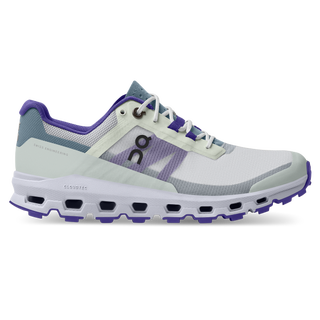
The Cloudvista’s exceptional traction makes the shoe especially ideal for beginners. Trail runners at any level will love the mid-level cushion and light weight, as Kilgore attests
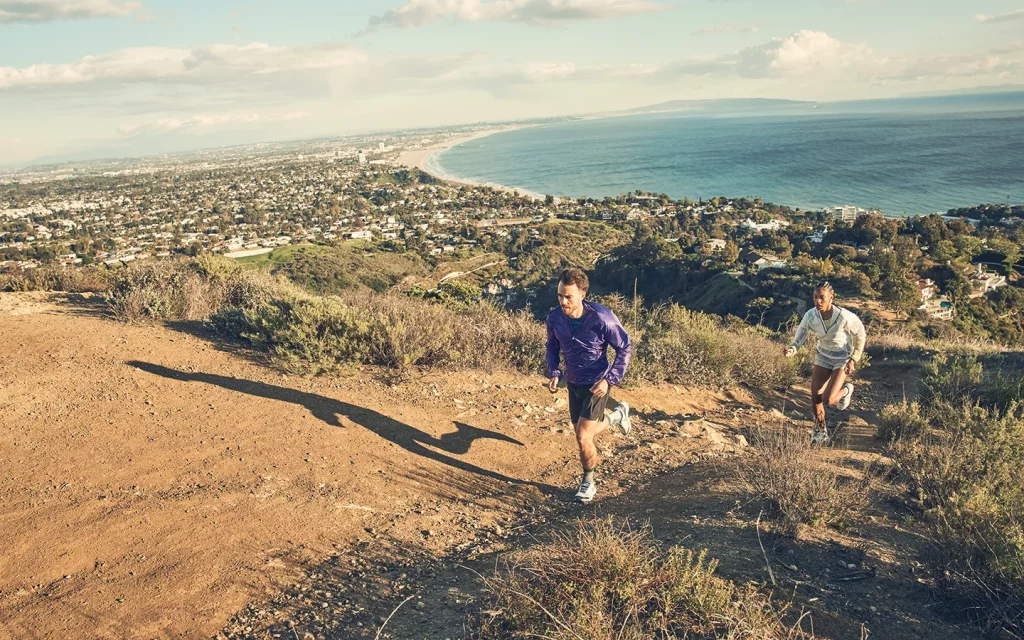
Set Expectations
Trail running, especially for beginners, is a less pace-driven activity — different lengths and elevations lead to varying speeds. You’ll likely run shorter distances and slower paces, but your goals will be different too. Go by time, Kilgore advises, to make the run more fun and relaxing. It also makes it easier to fit trail kilometres into a busy schedule.
“Start easy and grow from there,” Kilgore says. “Try an hour and then try more the next time. Once you understand what your body needs on the trail, you’ll spend more time out there.”
Unsure where to start looking for trails? Kilgore recommends Strava heat maps and Alltrails as good places to start.
“There’s a simplicity to trail running,” Kilgore says. “I enjoy being outside all of the time, with friends or the peacefulness of Mother Nature.”
Created by Runner’s World for On. Photographer: Beau Grealy; Hair/Makeup Artist: Ericka Verrett; Creative Producer: Hannah Miller